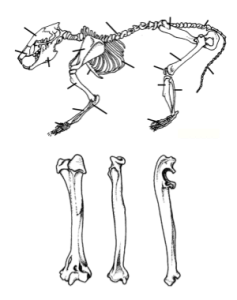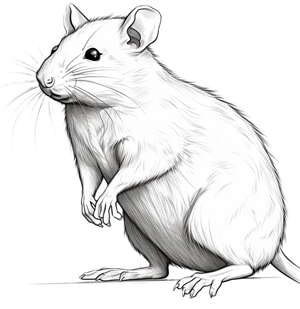
A rat spends most of its life moving through small spaces. The skeleton of the rat is well suited for burrowing and climbing behavior. Rats are agile, and can squeeze into tiny spaces. The bones are lightweight, sturdy, and flexible!
In this exercise, students color the rat skeleton and label each of the bones. The bones of the rat follow the same pattern as other vertebrates, including the human skeleton. While both rat and human skeletons share some similarities due to the basic vertebrate structure, there are differences in terms of size, morphology, and adaptations.
For example, the rat skeleton is much smaller than a human skeleton. The skull is elongated with a strong mandible adapted for chewing. The most obvious difference is the presence of caudal vertebrae with make up the tail of the rat.
The worksheet includes descriptions of the bones of the axial skeleton (cranium and vertebrae), plus detailed descriptions of the bones of the forelimb and hindlimb. The pelvis of the rat is elongated compared to the human.
Overall, the rat skeleton is adapted for moving in small spaces. Rats have flexible backbones and shoulders which allow it to maneuver in small spaces. The elongated tail helps a rat with balance. Though rat are considered pests, many keep domesticated rats as pets. Rats are intelligent and can even be trained!
Around Halloween, you can buy cheap plastic skeletons of rats. For fun, have students examine the plastic model and compare it to a diagram or even a real skeleton. They can list all of the structures in the plastic model that are correct, and structures that are incorrect.

Other Resources
Rat Dissection Resources with Student Handouts

